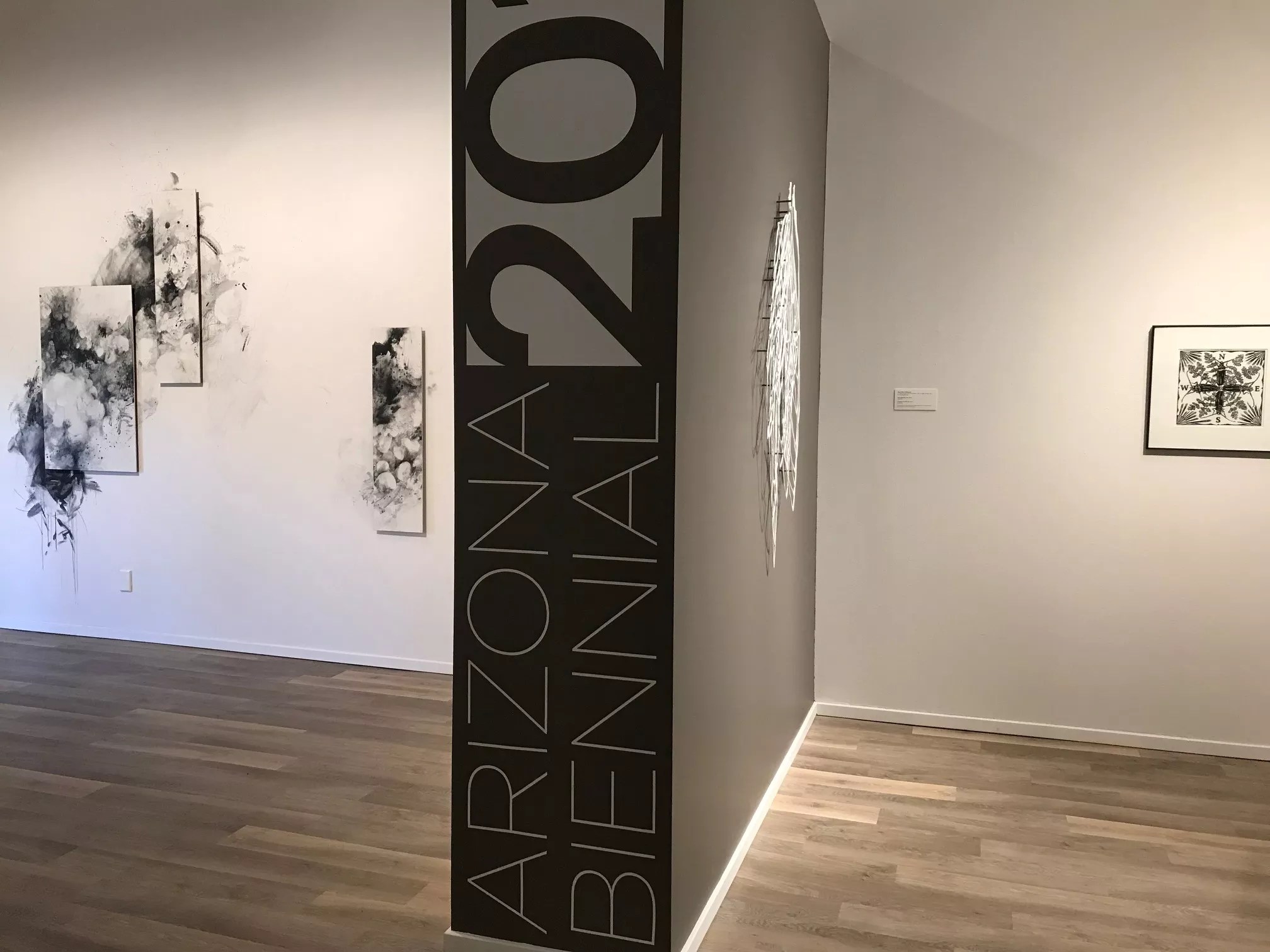
Lynn Trimble

Audio By Carbonatix
For so many Southwest dwellers, life is a shifting amalgamation of in-betweens. We live in borderlands, between countries. We’ve come from, or we’re heading to, another place. We exist in built environments, surrounded by the natural world. We’re shedding old identities, even as we work to shape new ones.
It’s a phenomenon that’s beautifully captured in the “2018 Arizona Biennial” exhibition at Tucson Museum of Art, which opened on July 6 and continues through September 16. The exhibition includes 85 works, created by 70 artists. About half the artists are based in metro Phoenix.
The exhibition was curated by Rebecca R. Hart, curator of modern and contemporary art at Denver Art Museum, who culled selected works from 1,507 submissions. The works she’s chosen fall roughly into three themes she identifies in her juror’s statement for the show: the natural world, the social realm, and the individual and identity.
A common thread, of lives lived in-between places, cultures, or states of being, is evident throughout.
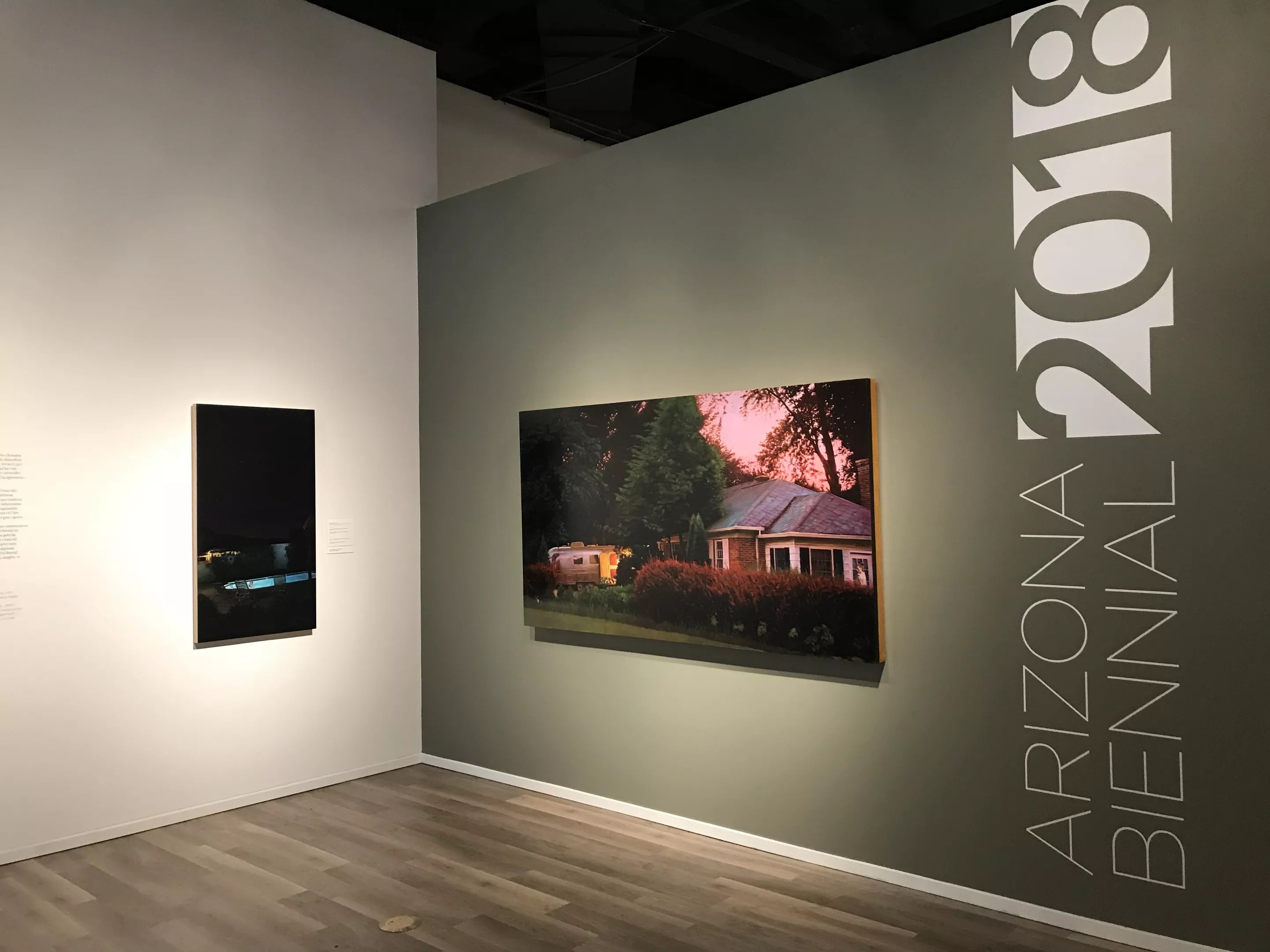
Works by Cam DeCaussin exhibited at Tucson Museum of Art.
Lynn Trimble
There’s an ethereal in-between quality to the first work viewers confront as they enter the gallery spaces housing the biennial. It’s a large-scale oil painting by Cam DeCaussin. Titled Or So I’m Told But How Would You Fake It, the 2016 work depicts a deceptively simple scene, including a home set within trees that conjure thoughts of woodlands. In the driveway, there’s a camper, signaling the wanderlust that befalls those tethered to this home. They’re living between putting down roots, and spreading their wings.
The biennial also includes a sculpture titled Esthetics of Decay #11, a piece created in 2017-18 by Tucson-based artist Olivier Dubois-Cherrier. Comprising a found saguaro cactus skeleton, foam, wood, chicken wire, and concrete, it’s a meditation on the ways we dance between growth and decay in the journey from birth to death. By setting the skeleton within concrete, the artist also prompts reflection on natural versus built environments – an issue at the heart of so many discussions about urban planning.

Works by Laura Spalding Best (left), Olivier Dubois-Cherrier (right), and additional artists.
Lynn Trimble
Nearby, there’s a wall filled with oil paintings on found objects, which comprise a 2016 work by Phoenix-based artists Laura Spalding Best called Known Waterfalls of Greater Phoenix! First shown at Chartreuse gallery, it’s a collection of small paintings depicting manmade water features rather than naturally-occurring waterfalls. The installation takes on new meaning in 2018, as Americans are grappling with a growing chasm between fact and fiction in the political realm, and concerns that protections for natural resources are waning.
Most striking are two digital archival prints by Tucson-based artist Sama Alshaibi, who describes herself as “a Palestinian-Iraqi exiled from two homelands.” Each depicts the artist, transformed through theatrical cosmetics that reference historical Iraqi markers including tribal tattoos, scarification, and the cuneiform script of ancient people who thrived in the region of modern-day Iraq.
Titled Obverse Discursive (2016) and Arabic and Cuneiform: to read and write (2016), they’re gripping testaments to the realm of in-betweens experienced by people living with war, displacement, and oppression. For the artist, they’re also an act of resistance – against injustice promulgated by the U.S. in the aftermath of 9/11.
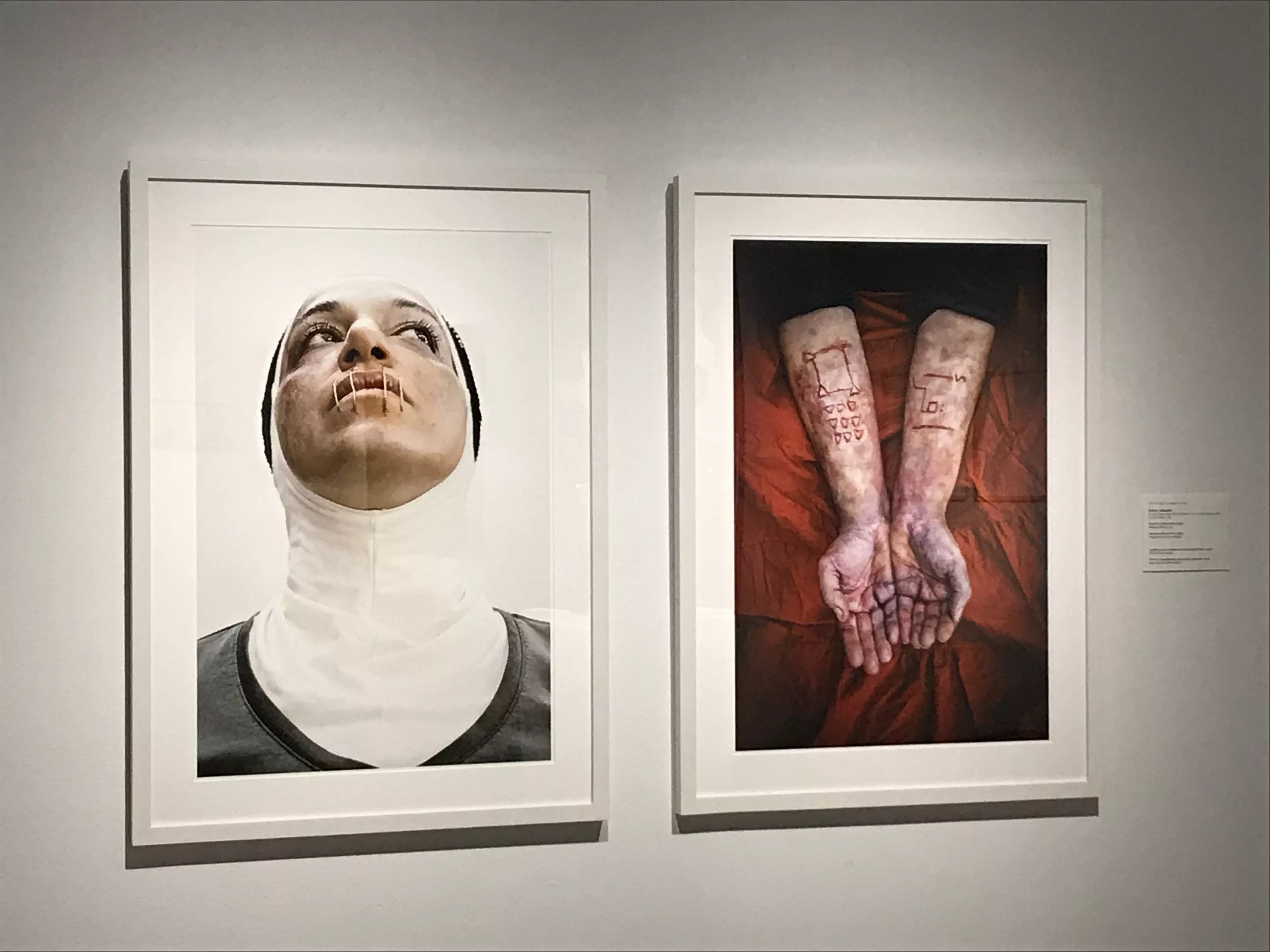
Works by Sama Alshaibi exhibited at Tucson Museum of Art.
Lynn Trimble
But there’s another in-between at play here.
It’s the Southwest borderlands.
Several artists poignantly capture the ambiguities of the region, primarily through sculpture, photographs, and video.
Tempe-based artist Kimberly Lyle created a two-channel HD video titled Lines of Communitcation, Lineas de comunicación (2016). On vertical side-by-side screens, viewers see two arms with hands holding a ball of yarn, one red and the other blue. Each gets tangled over time, as viewers hear the voices of two women living within the intersection of Spanish and English language.
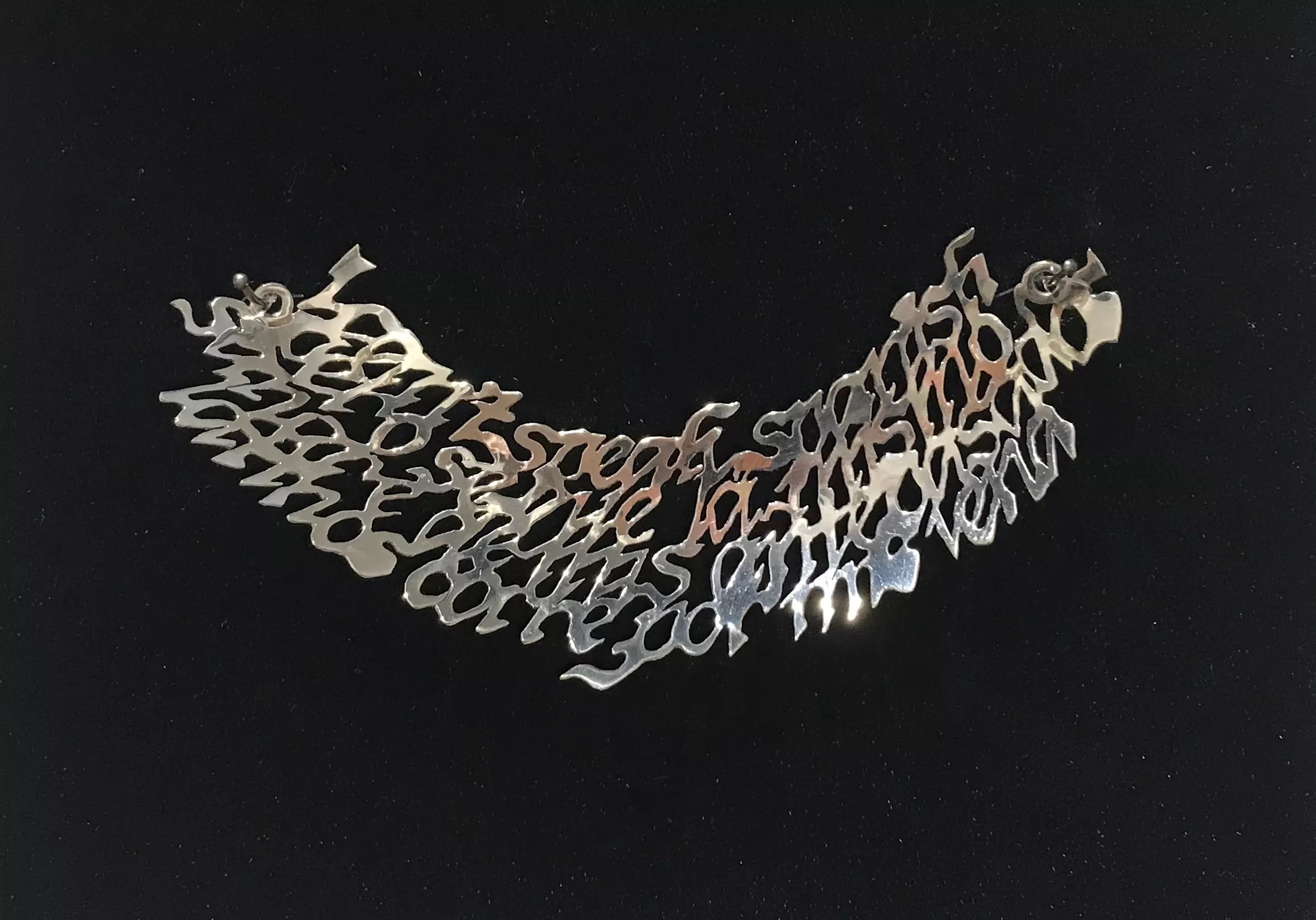
Sterling silver piece created by Samantha Fr
Lynn Trimble
Nearby, there’s a small piece of calligraphic script cut from sterling silver. Created by Gilbert-based Samantha Frésquez and Phoenix-based Merryn Alaka, La Misma (2018) features verse from an Audrey Ruiz poem titled But, which addresses American Latinos who don’t speak Spanish.
Another Tucson artist, Karlito Miller Espinosa, addresses the lack of belonging felt by migrants, refugees, and Dreamers, with a pair of welcome mats called Untitled (Deferred Action), created in 2016-17. Using acrylic and shoe polish, he’s altered coir coconut fiber mats using Spanish phrases that mean “neither from here” and “nor from there.” Written in the Akzidenz-Grotesk font of Donald Trump’s 2016 campaign materials, the artist calls out Trump’s use of “otherness” to foster fear of immigrants.
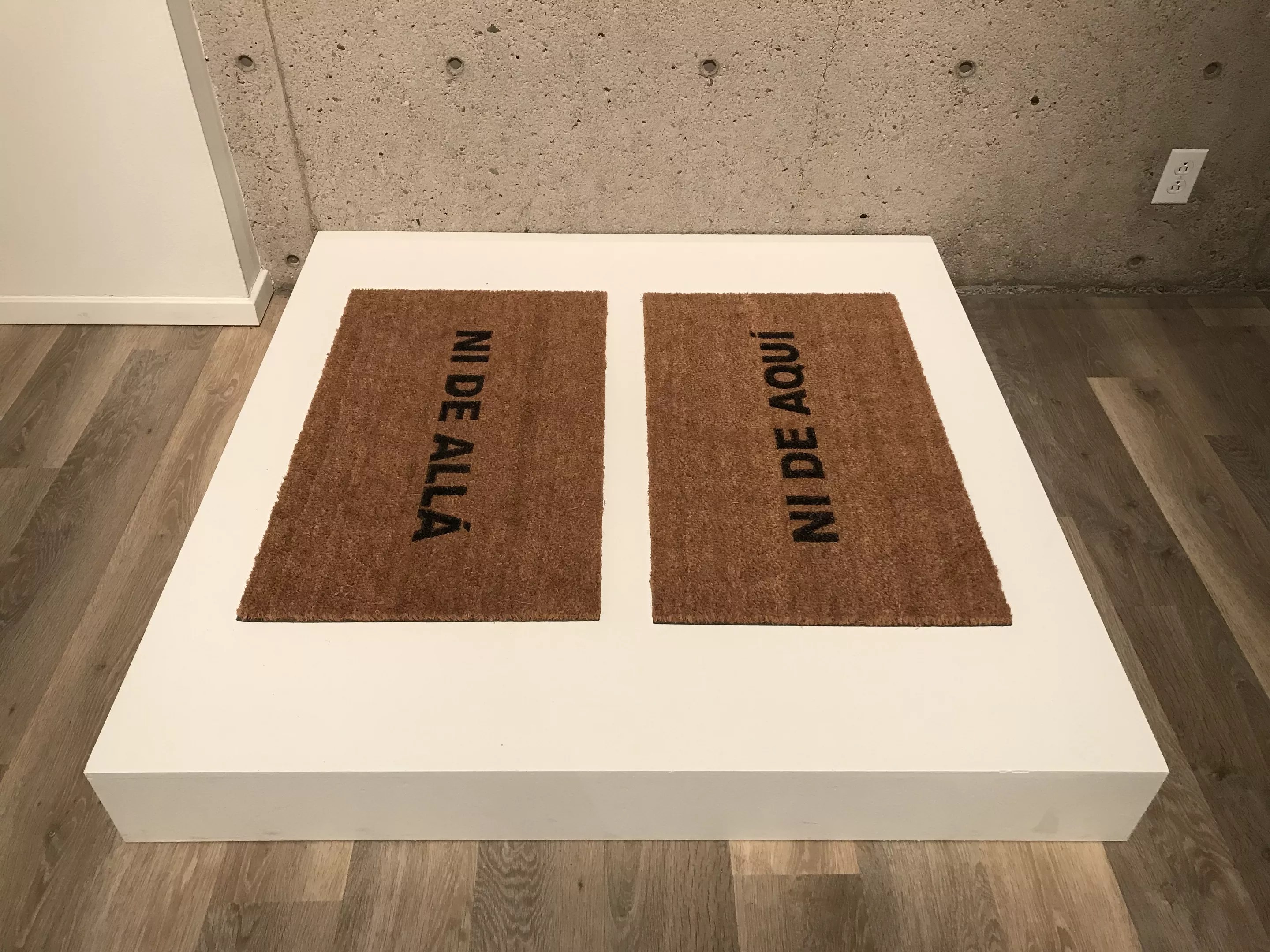
Work by Karlito Miller Espinosa featured in “2018 Arizona Biennial” exhibit.
Lynn Trimble
Hart’s thoughtful curation assures that viewers see the breadth and depth of in-between experiences for people populating the Southwest, even as it demonstrates the conceptual richness of Arizona’s creatives.
The “2018 Arizona Biennial” continues through Sunday, September 16, at Tucson Museum of Art. The exhibit is free with museum admission, which is $12 for adults. Get details on the Tucson Museum of Art website.